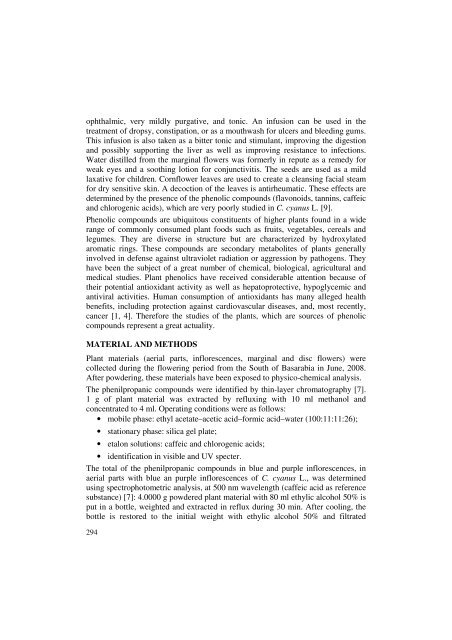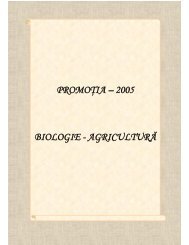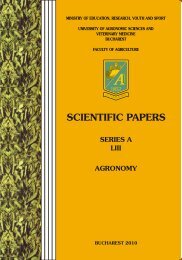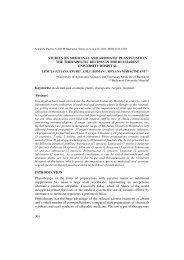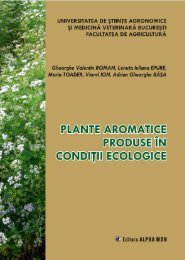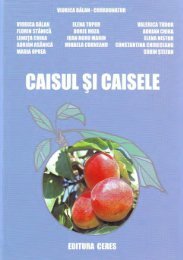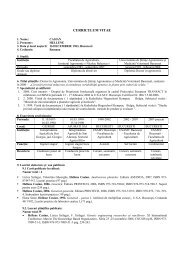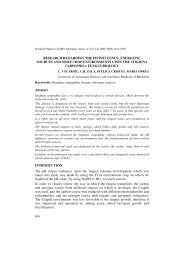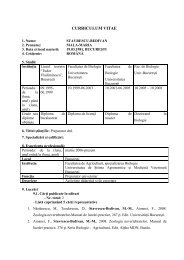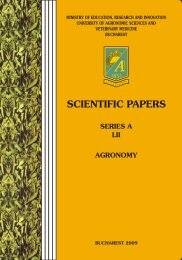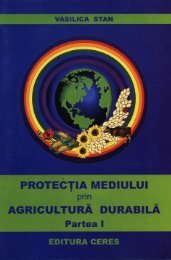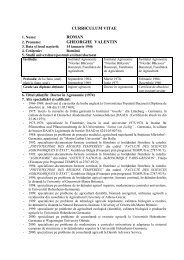phytochemical study of centaurea cyanus l
phytochemical study of centaurea cyanus l
phytochemical study of centaurea cyanus l
Create successful ePaper yourself
Turn your PDF publications into a flip-book with our unique Google optimized e-Paper software.
ophthalmic, very mildly purgative, and tonic. An infusion can be used in thetreatment <strong>of</strong> dropsy, constipation, or as a mouthwash for ulcers and bleeding gums.This infusion is also taken as a bitter tonic and stimulant, improving the digestionand possibly supporting the liver as well as improving resistance to infections.Water distilled from the marginal flowers was formerly in repute as a remedy forweak eyes and a soothing lotion for conjunctivitis. The seeds are used as a mildlaxative for children. Cornflower leaves are used to create a cleansing facial steamfor dry sensitive skin. A decoction <strong>of</strong> the leaves is antirheumatic. These effects aredetermined by the presence <strong>of</strong> the phenolic compounds (flavonoids, tannins, caffeicand chlorogenic acids), which are very poorly studied in C. <strong>cyanus</strong> L. [9].Phenolic compounds are ubiquitous constituents <strong>of</strong> higher plants found in a widerange <strong>of</strong> commonly consumed plant foods such as fruits, vegetables, cereals andlegumes. They are diverse in structure but are characterized by hydroxylatedaromatic rings. These compounds are secondary metabolites <strong>of</strong> plants generallyinvolved in defense against ultraviolet radiation or aggression by pathogens. Theyhave been the subject <strong>of</strong> a great number <strong>of</strong> chemical, biological, agricultural andmedical studies. Plant phenolics have received considerable attention because <strong>of</strong>their potential antioxidant activity as well as hepatoprotective, hypoglycemic andantiviral activities. Human consumption <strong>of</strong> antioxidants has many alleged healthbenefits, including protection against cardiovascular diseases, and, most recently,cancer [1, 4]. Therefore the studies <strong>of</strong> the plants, which are sources <strong>of</strong> phenoliccompounds represent a great actuality.MATERIAL AND METHODSPlant materials (aerial parts, inflorescences, marginal and disc flowers) werecollected during the flowering period from the South <strong>of</strong> Basarabia in June, 2008.After powdering, these materials have been exposed to physico-chemical analysis.The phenilpropanic compounds were identified by thin-layer chromatography [7].1 g <strong>of</strong> plant material was extracted by refluxing with 10 ml methanol andconcentrated to 4 ml. Operating conditions were as follows:• mobile phase: ethyl acetate–acetic acid–formic acid–water (100:11:11:26);294• stationary phase: silica gel plate;• etalon solutions: caffeic and chlorogenic acids;• identification in visible and UV specter.The total <strong>of</strong> the phenilpropanic compounds in blue and purple inflorescences, inaerial parts with blue an purple inflorescences <strong>of</strong> C. <strong>cyanus</strong> L., was determinedusing spectrophotometric analysis, at 500 nm wavelength (caffeic acid as referencesubstance) [7]: 4.0000 g powdered plant material with 80 ml ethylic alcohol 50% isput in a bottle, weighted and extracted in reflux during 30 min. After cooling, thebottle is restored to the initial weight with ethylic alcohol 50% and filtrated


